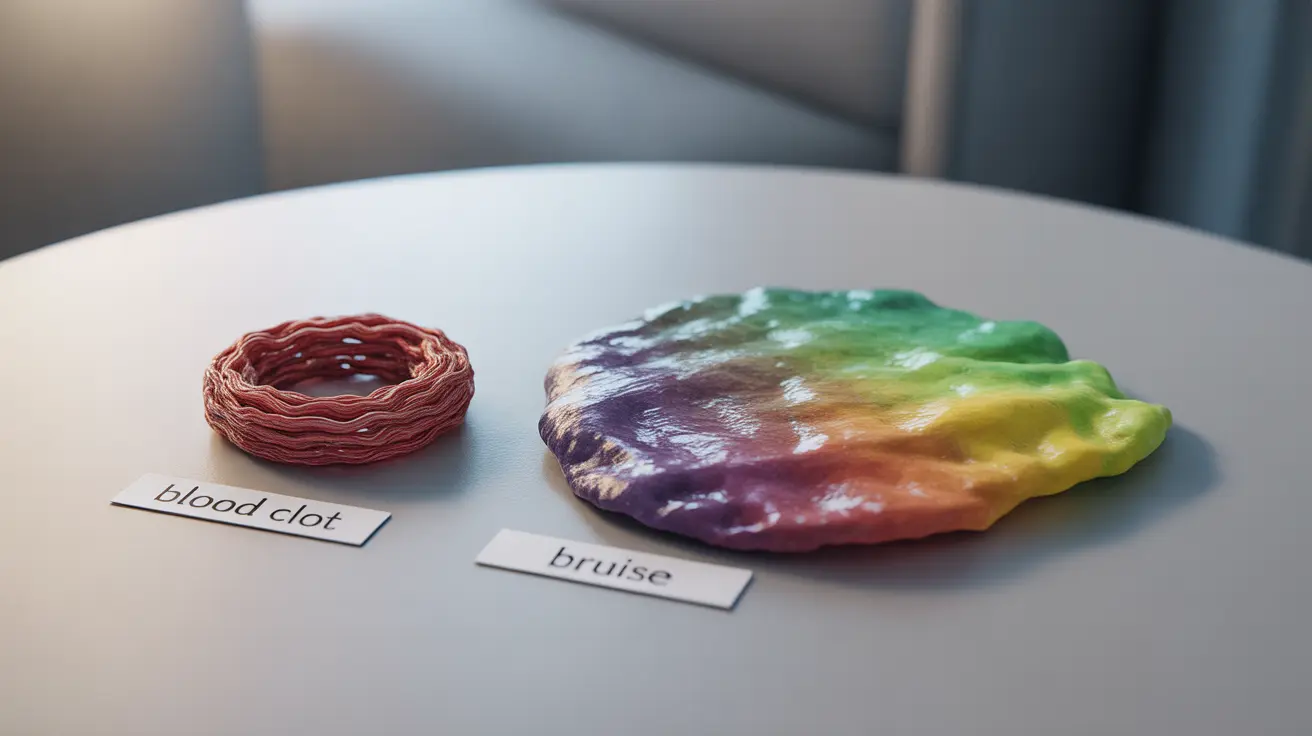Understanding the difference between a blood clot and a bruise can be crucial for your health and safety. While both conditions involve blood vessels and can cause discoloration of the skin, they have distinct characteristics and varying levels of medical urgency. This comprehensive guide will help you identify the key differences and know when to seek immediate medical attention.
Visual Characteristics and Appearance
Blood clots and bruises can look deceptively similar at first glance, but there are several distinguishing features to watch for. A bruise typically appears as a patch of discoloration that changes color over time, while a blood clot often presents with more specific visual and physical symptoms.
Bruise Appearance
A typical bruise will show these characteristics:
- Initially appears purple or red
- Changes color over time (purple to green to yellow)
- Spreads out with defined edges
- May cover a larger surface area
- Generally flat or only slightly raised
Blood Clot Appearance
Blood clots, particularly those near the surface (superficial thrombophlebitis), often display these features:
- Appears red or reddish-brown
- Color remains relatively constant
- Usually has a rope-like or cord-like appearance
- Often feels firm or rigid to the touch
- May be noticeably warm
Physical Symptoms and Sensations
The way each condition feels can provide important clues about whether you're dealing with a simple bruise or a potentially dangerous blood clot.
Bruise Symptoms
Bruises typically present with:
- Tenderness when touched
- Pain that gradually decreases
- No significant warmth
- Normal skin temperature
- Improves over days or weeks
Blood Clot Symptoms
Blood clots often cause more severe symptoms:
- Persistent or worsening pain
- Significant warmth in the affected area
- Swelling that may be severe
- Skin that feels taut or stretched
- Possible difficulty moving the affected limb
Risk Factors and Prevention
Understanding your risk factors can help determine whether you're more likely to experience a blood clot versus a typical bruise.
Common Risk Factors for Blood Clots
- Recent surgery or hospitalization
- Extended periods of immobility
- Pregnancy or recent childbirth
- Obesity
- Smoking
- Certain medications (such as birth control pills)
- Family history of blood clots
When to Seek Emergency Care
While bruises rarely require medical attention, blood clots can be life-threatening. Seek immediate medical care if you notice:
- Severe swelling in one limb
- Unexplained pain that worsens over time
- Shortness of breath
- Chest pain
- Sudden cough
- Rapid heart rate
Frequently Asked Questions
What are the visual differences between a blood clot and a bruise in pictures?
In pictures, bruises appear as flat areas of discoloration that change from purple to green to yellow over time. Blood clots typically look like red or reddish-brown areas that remain consistent in color and may appear raised or rope-like under the skin.
How can I tell if a red or swollen area on my skin is a blood clot rather than a bruise?
A blood clot typically feels firm, warm to the touch, and may be painful. It often appears as a raised area with consistent coloring, while a bruise is usually flat and changes color over time. Blood clots also tend to cause more persistent pain and swelling compared to bruises.
What symptoms indicate a blood clot instead of a normal bruise?
Blood clots typically cause persistent or worsening pain, significant warmth in the affected area, severe swelling, and skin that feels tight. Unlike bruises, blood clots may also cause difficulty moving the affected limb and don't show the typical color changes associated with bruising.
Can a bruise turn into a blood clot, and what signs should I watch for?
While a bruise itself doesn't turn into a blood clot, trauma that causes a bruise could potentially lead to clot formation in some cases. Watch for increasing pain, warmth, swelling, and redness that doesn't improve over time - these may indicate clot formation requiring medical attention.
When should I seek medical attention if I suspect a blood clot instead of a bruise?
Seek immediate medical care if you experience severe swelling in one limb, unexplained worsening pain, shortness of breath, chest pain, sudden cough, or rapid heart rate. These symptoms could indicate a dangerous blood clot requiring urgent treatment.




